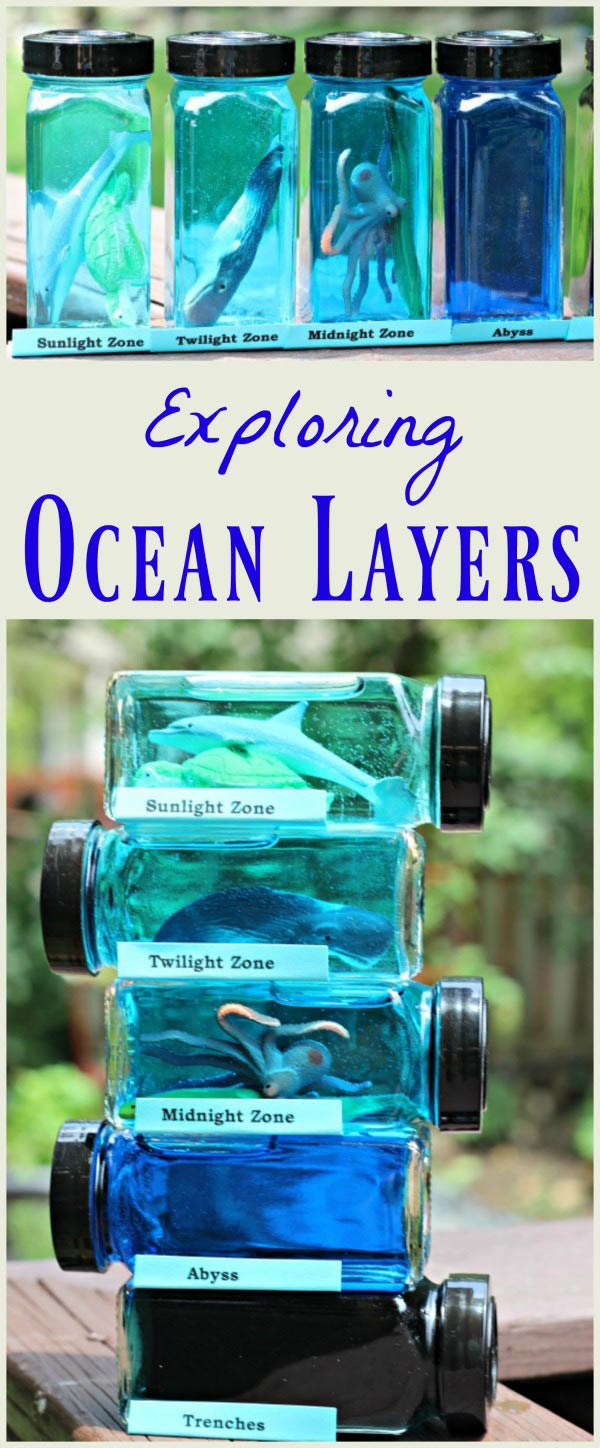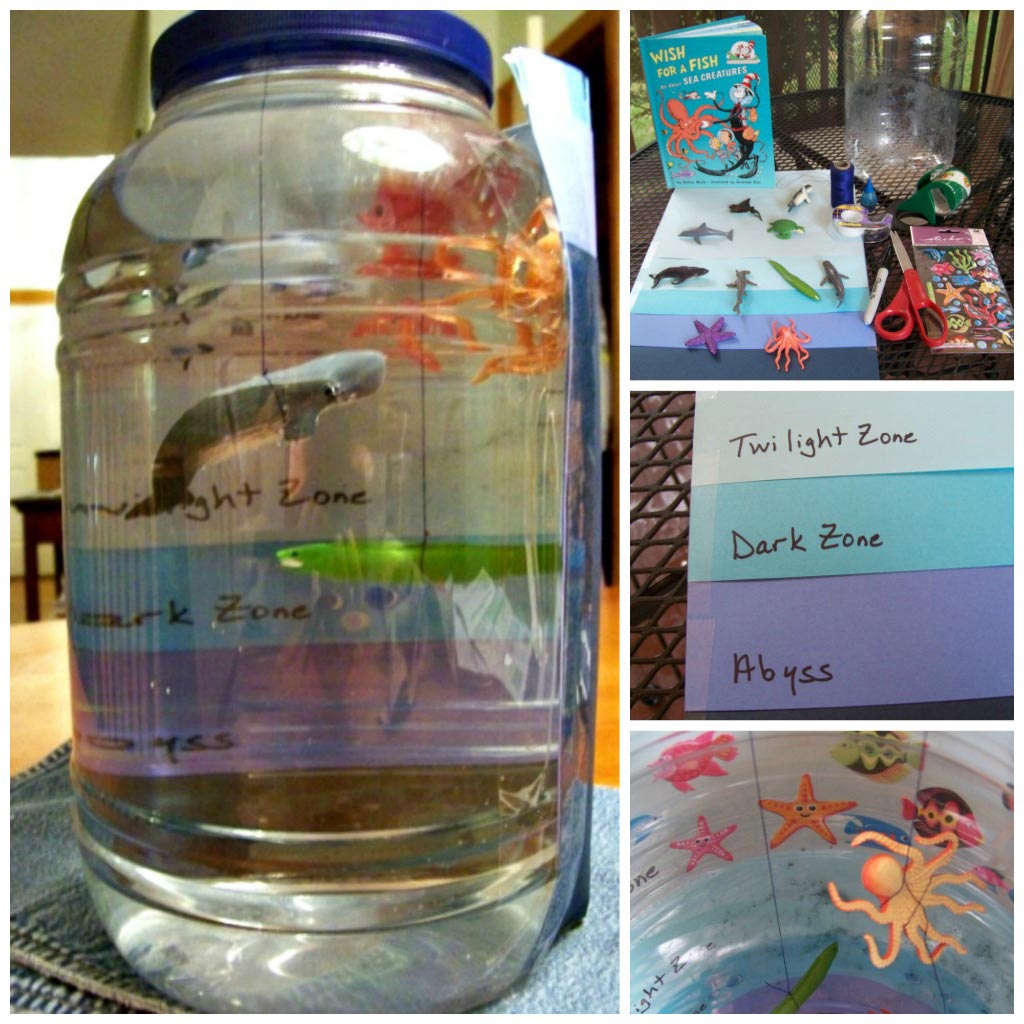Learn about oceans zones and layers of the sea with this hands-on animal habitat science project!
Every summer, we seem to gravitate toward ocean science projects and learning about the various ocean layers and animals.
My kids have always been fascinated by ocean animals — probably because we hardly get to visit any large body of water since we live smack dap in the middle of the country 🙂
Today’s activity focuses on some under-the-sea science questions that will help your kids understand the five layers of the ocean, who lives there and how light travels — and it’s one amazingly beautiful project!
Ocean Zones Science Project: Marine Life & Sea Layers
This is one of those crafty science projects that can be done with kids of all ages! Preschoolers and younger kids will learn about the various layers of the ocean (since the ocean has 5 distinct zones) along with where marine animals live. Older kids (including teens) can dive into some of the science of how far light travels in the ocean and a more in-depth look at how that impacts life in each ocean zone.
We’ve include details about how to construct your own ocean layers along with affiliate links to items you might need and some awesome books to read for this project!
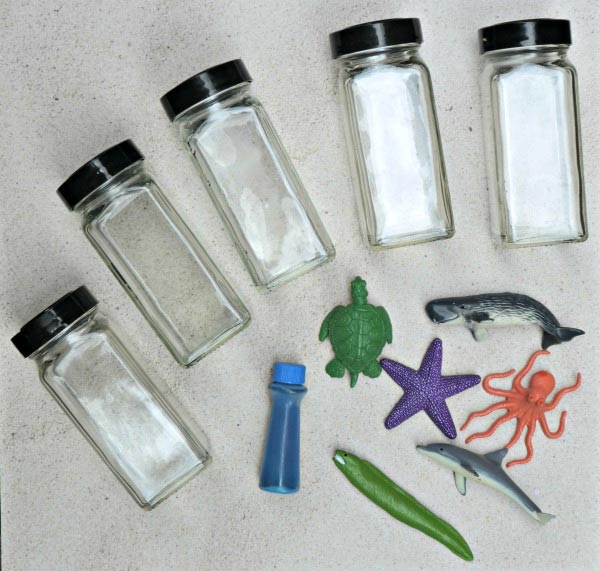
Ocean Layers Science Project
You’ll need a few items to create your own layers of the ocean:
• 5 small containers (we used glass spice jars from Trader Joe’s) that will easily stack. If you don’t have small jars, try using small round food storage containers with lids or even these larger rectangular bins so you can include more animals in each one
• Water
• Food coloring (you’ll need blue, red & green to make the colors in all 5 layers)
• Ocean creatures (we love the ones from Safari Ltd! Try the Safari Ltd Ocean Animals TOOB which we used in our ocean jars and also the Safari Ltd. Deep Sea Creatures
group which you could use for the deep ocean zones too.
• If you’re looking to include this activity as part of a homeschool or classroom unit, check out the Ocean Science printables for pre-K to 2nd grades or this Ocean Zones Science printable pack for older kids!
• Paper & pen so you can label each ocean layer
And of course, a book or two 😉 You’ll want some that discuss the various layers or zones — I like to ask my kids what they want to learn about when it comes to starting with a book. Some will say ‘glow in the dark’ fish and others will say dolphins.
Here are a few books that I would recommend:
Down, Down, Down: A Journey to the Bottom of the Sea is one of my all-time favorites when it comes to ocean books! The reader can follow along as they learn about animals that live all through the various ocean zones. And the glossary in the back is AMAZING!
A Day in the Deep takes you to the lower parts of the ocean and introduces so many marine animals that you’ve probably never heard of 😉
And be sure to check out our list of fun Ocean Activities and Books for Kids too!
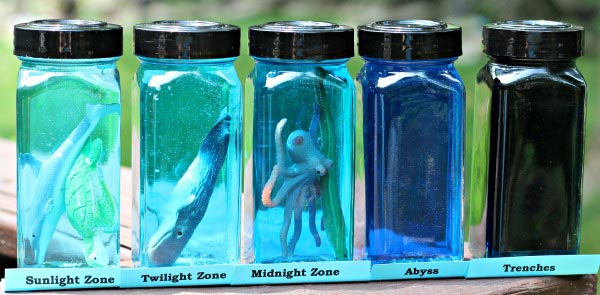
Which Sea Animals live in which Ocean Layer?
Write out the names of the 5 Ocean Layers/Zones so you can use them to label your bottles:
- Sunlight Zone
- Twilight Zone
- Midnight Zone
- Abyss
- Trenches
If you’re using any animal figures, be sure to put them into the containers first! Otherwise, you’ll be having a quick discussion about water displacement if you drop them in after the bottles are filled 🙂
We only used Safari Ltd Ocean TOOB animals for our upper ocean layers since we were discussing how light travels and didn’t want anything in the jars for the lower ocean when we were looking at this concept. If you want to include animals in the lower zones, check out the Safari Ltd Deep Sea Creatures..
And yes, there is an octopus and eel in our midnight zone — we chose to be creative! We learned that the Dumbo octopus lives there along with certain species of eels so we added them. Let your kids be creative with what they read & learn!
You can use one of these books to learn more about which marine animals live in the various ocean zones or layers:
Ocean: A Visual Encyclopedia is a beautiful book with gorgeous photos & facts for all types of ocean animals!
And we love Wish for a Fish: All About Sea Creatures as a resource for younger kids (it’s part of the Cat in the Hat Learning library which is a wonderful non-fiction science series for kids)!
And for fans of Ms. Frizzle, try the Magic School Bus Presents: Sea Creatures: A Nonfiction Companion to the Original Magic School Bus Series! This is a newer book that focuses on sea animals and pairs nicely with the original Magic School Bus on the Ocean Floor (which talked more about the ocean in general).
These books are also a great resource to pair with our Ocean STEM Activity: Drawing the Ocean Layers with Chalk project too!!
What are the names of the Ocean Zones?
Once you’ve added your animals, fill each container with water and then add food coloring for each of your ocean zones. Here’s a GORGEOUS Ocean Zones printable poster that you can use with this activity!! Our containers used about 6 oz. of water so you may have to adjust your food coloring depending on how much water is added to your containers. We added the following drops of food coloring to each jar:
Sunlight Zone — we touched a toothpick to the blue food coloring and then tipped it into the bottle
Twilight Zone — 1 drop blue
Midnight Zone — 2 drops blue
Abyss — 4 drops blue
Trenches — 5 drops blue, 2 drops green & 1 drop red
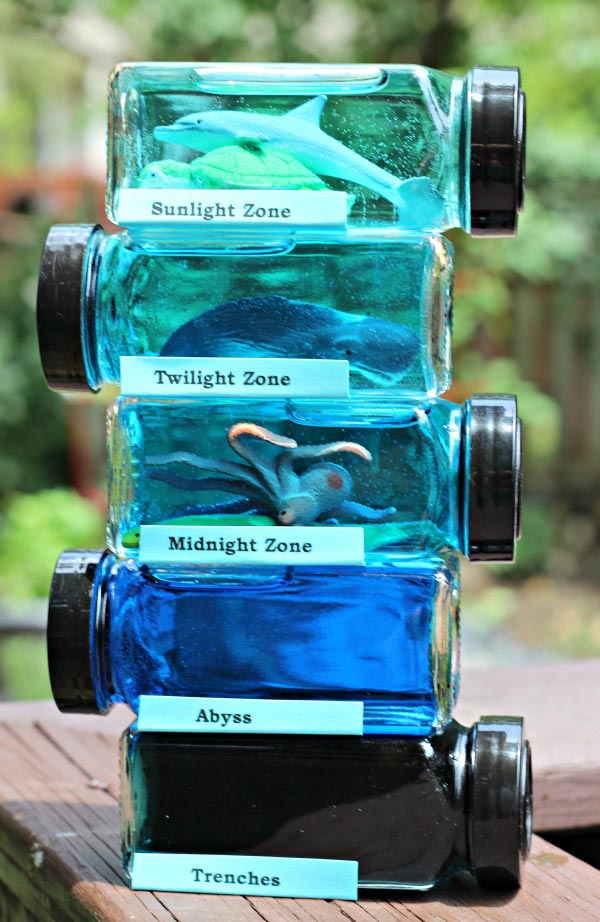
5 Layers of the Ocean in Jars
Now comes the cool part — stack your containers!
I know — one of those beautiful science crafts, right?!
Be sure to refer back to your books and reading about the types of animals that live in the various zones.
When we made our Ocean in a Jar (last year’s ocean science project!) it was very clear that most of the marine animals live in the Sunlight Zone, a few live in the Twilight Zone and as you progress deeper into the ocean, you find those layers are less populated.
AND the animals that live in the deeper layers have various adaptations that will allow them to thrive without light or a huge food source which is super interesting.
If your kids enjoy projects like this, be sure to see our Ocean Layers STEM Activity too — all you need is some sidewalk chalk to create an ocean at home!
** I do want to note that some resources will only list 3 ocean zones (sunlight, twilight & midnight) — they are including the abyss & trenches as part of the midnight layer of the ocean. I think that we probably should have made our midnight layer a little darker so less light would shown though our jar.
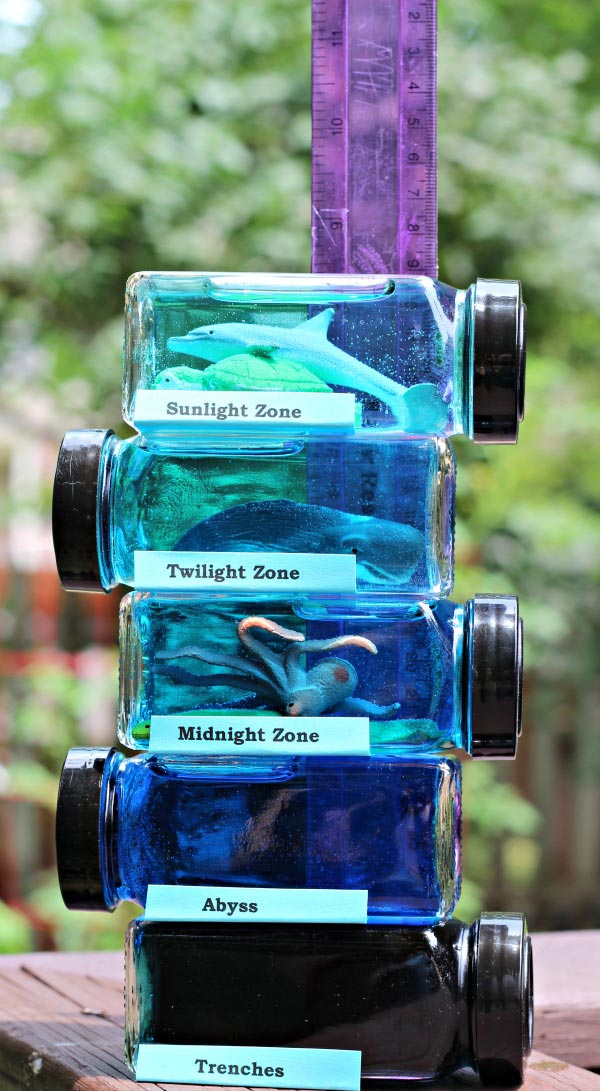
Ocean Science Experiment: How Does Light Travels through Water?
So let’s talk about how light travels in the ocean.
The National Ocean Service has a great graphic & visual about how far light travels in the ocean! They only refer to 3 ocean layers as I described above — but focus more on the depth that light reaches when it enters the water — only about 1000 meters (or 3,280 feet)!
The science behind it: As light enters the water, light rays are refracted due to the density of the water. When light enters a more dense material, it slows down. As they light rays are refracted (or bent), they spread apart and are slowing down along with some of the rays being absobed by solid particles in the water.
This is why the ocean appears to have different colors of blue — not because it is blue but because of the amount of light from the sun that reaches each ocean layer decreases as you travel deeper.
And this is also why the majority of animals live in the upper layers of the ocean since they need light (and some of them also need oxygen as they will come to the surface to breathe).
You can see in the photo above that we put a ruler behind our stacked ocean jars to get an idea of the light traveling through the water and how well you could see the ruler when looking through each jar.
ps. we also did this experiment outside but you could do it inside where less light would penetrate your ocean layers and also get a good idea of how light travels.
To learn more about this science concept, try these Light Refraction Science Experiements too!
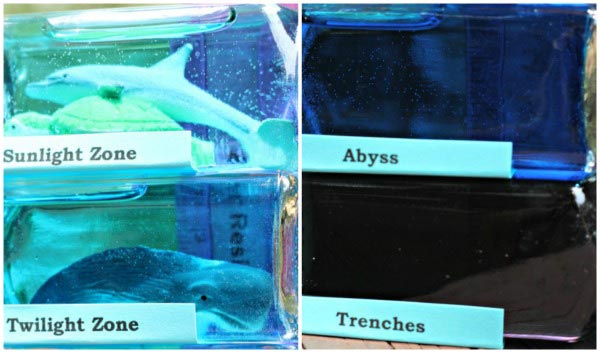
Here’s a really close look at the ruler and how much you are able to see it through each of the ocean jars. It’s much easier to see in the upper layers of our ocean and hardly visible in the lower layers.
Can’t see it at all in the trenches but I promise, it’s there! 🙂
More Ocean Activities for Kids:
If you’d like to dive in deeper (yep! I did just say that ;), here are some other excellent resources to use when learning about ocean layers and the animals that live in each one:
Prof. Noggin’s Life in the Ocean — these card decks are super fun and include themed trivia that kids of all ages will enjoy!
And if you’re looking for a great visual experience, we highly recommend the Blue Planet: Seas of Life DVD set!
Plus these great hands-on activities —
Learn about Ocean Zones: Make your own Ocean in a Jar
Draw a Life-size Whale: Math & Science Fun
And for more — visit our Summer Printable Pack with more than 20+ full-color scavenger hunts, travel games & fun activities!

